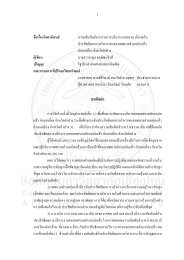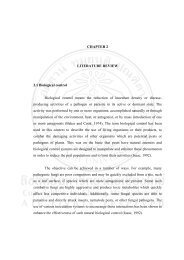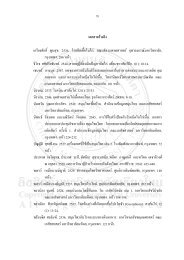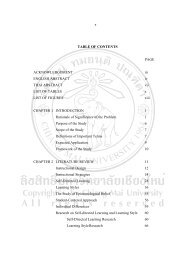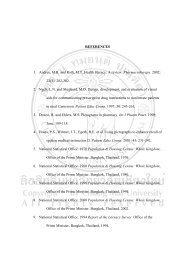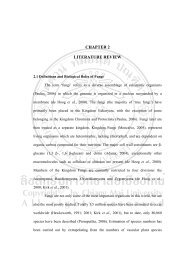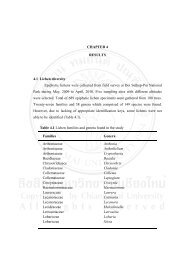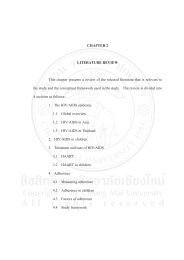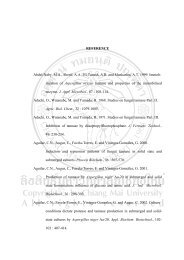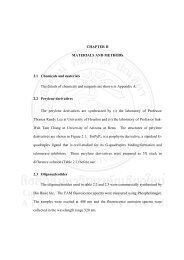prevalence and molecular characteristics of vibrio species in pre ...
prevalence and molecular characteristics of vibrio species in pre ...
prevalence and molecular characteristics of vibrio species in pre ...
Create successful ePaper yourself
Turn your PDF publications into a flip-book with our unique Google optimized e-Paper software.
31<br />
elim<strong>in</strong>ation <strong>of</strong> Edwardsiella tarda, S. aureus, Salmonella <strong>and</strong> Shigella were achieved<br />
with<strong>in</strong> 1.5 hrs <strong>and</strong> E. coli <strong>and</strong> S. pyrogenes were completely killed with<strong>in</strong> 2-3 hrs<br />
under same condition. Simultaneously, both JK-8 <strong>and</strong> JK-11 culture facilitated the<br />
removal <strong>of</strong> different nitrogen compounds (e.g. NH + 4, NO - 2, <strong>and</strong> NO - 3) up to 400 µM.<br />
2.10.1.3 HACCP application<br />
The use <strong>of</strong> hazard analysis critical control po<strong>in</strong>t (HACCP) as a means <strong>of</strong><br />
controll<strong>in</strong>g food borne pathogens <strong>in</strong> the food <strong>in</strong>dustry is ga<strong>in</strong><strong>in</strong>g acceptance<br />
<strong>in</strong>ternationally both by <strong>in</strong>dustry <strong>and</strong> regulatory agencies. Food manufacturers can<br />
identify steps for <strong>pre</strong>vent<strong>in</strong>g, controll<strong>in</strong>g or elim<strong>in</strong>at<strong>in</strong>g hazards associated with their<br />
product <strong>and</strong> m<strong>in</strong>imize the potential food safety problems (Buchanan, 1995). HACCP<br />
<strong>in</strong> shrimp farms can <strong>in</strong>clude all steps from the “farm to table” such as, production <strong>and</strong><br />
h<strong>and</strong>l<strong>in</strong>g <strong>of</strong> raw materials, process<strong>in</strong>g operation, process<strong>in</strong>g environment, h<strong>and</strong>l<strong>in</strong>g<br />
<strong>and</strong> storage practices, <strong>and</strong> distribution activities (Tookw<strong>in</strong>as <strong>and</strong> Keerativiriyaporn,<br />
2004). A good aquaculture practice is a <strong>pre</strong>requisite for the implement<strong>in</strong>g HACCP.<br />
Good aquaculture practices are def<strong>in</strong>ed as those practices <strong>of</strong> the aquaculture sector<br />
that are necessary to produce quality food products, conform<strong>in</strong>g to food law <strong>and</strong><br />
regulations. Conduct<strong>in</strong>g hazard analysis, determ<strong>in</strong>e critical control po<strong>in</strong>ts (CCP),<br />
establish critical limits, establish a system to monitor control <strong>of</strong> CCP, establish the<br />
corrective action, establish procedures for verification <strong>and</strong> establish documentation<br />
are the ma<strong>in</strong> 7 steps <strong>in</strong>cluded <strong>in</strong> the HACCP system (Reilly <strong>and</strong> Käferste<strong>in</strong>, 1997).<br />
Reilly <strong>and</strong> Käferste<strong>in</strong> (1997) identified four critical control po<strong>in</strong>ts <strong>in</strong> the aquaculture<br />
farm<strong>in</strong>g. Those are site selection, water supply, feed supply <strong>and</strong> production/grow out<br />
stage, <strong>and</strong> expla<strong>in</strong>ed the control <strong>and</strong> verification methods for each step. Farm<br />
management, feed production <strong>and</strong> farm<strong>in</strong>g practices are the CCP that have been<br />
studied by Tookw<strong>in</strong>as <strong>and</strong> Keerativiriyaporn (2004) <strong>and</strong> <strong>pre</strong>ventive measures applied<br />
<strong>in</strong> shrimp farm<strong>in</strong>g <strong>in</strong> Thail<strong>and</strong> are i). Farm registration; ii). Control the uses <strong>of</strong><br />
feed/antibiotics; iii). Monitor residues <strong>in</strong> products from farm; iv). Mobile unit control<br />
<strong>of</strong> diseases; use <strong>of</strong> antibiotics <strong>and</strong> feed; v). Monitor<strong>in</strong>g the quality <strong>of</strong> water (both <strong>in</strong>let<br />
<strong>and</strong> outlet); vi). Inspect farm hygiene <strong>and</strong> post harvest h<strong>and</strong>l<strong>in</strong>g practices; vii). Tra<strong>in</strong>




